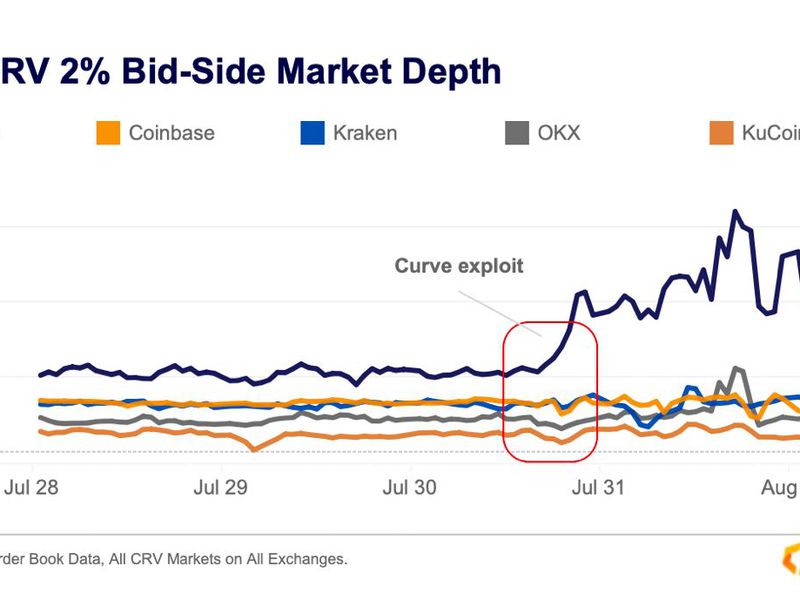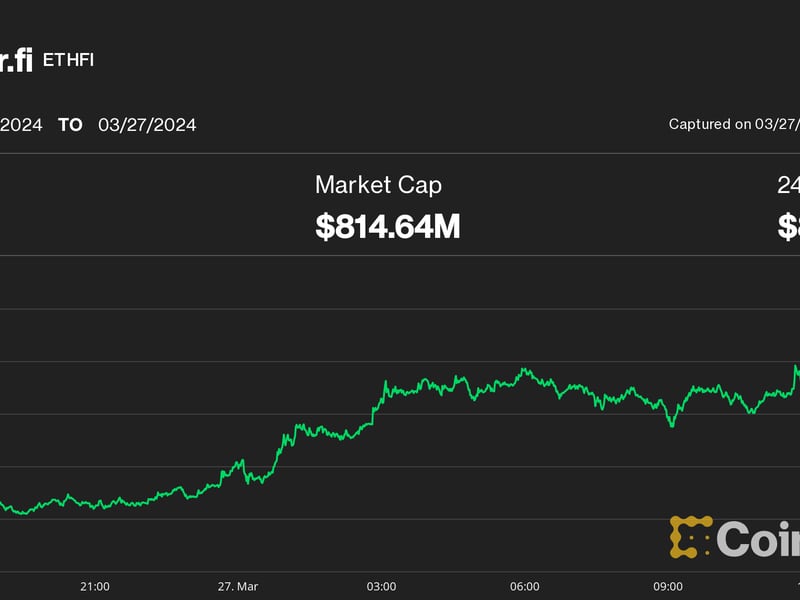Web3 Should Be Built on Bitcoin, Not Its Imitators
A fundamental debate in the Bitcoin community has been reignited by the recent launch of Bitcoin Ordinals: to build or not to build on Bitcoin?
Creating new applications on Bitcoin presents an opportunity to leverage the most secure, resilient and liquid network to build Web3. From social networks to financial services, Web3 applications look to convert our most sensitive daily touch points into trustless systems. Eliminating centralized control means that the systems underlying Web3 applications must be as stable and ironically trustworthy as possible.
Alex Adelman is the CEO and co-founder of Lolli.
Bitcoin (BTC) has long been seen almost exclusively as a currency and store of value. However, the Bitcoin blockchain has proven, through over a decade of unfailingly solid and routine operations, that it is the most secure and economically viable blockchain network and therefore the ideal foundation for Web3. To neglect to build on Bitcoin would be to forsake key applications for the network that have the potential to make the internet, and the world at large, a better place.
Bitcoin’s unparalleled level of decentralization among other cryptocurrencies directly correlates to its resistance to tampering. Only an attack that seizes the computing power of 51% or more of the network could result in theft or reversed transactions. This would be borderline impossible due to the prohibitive cost of obtaining that much computational power.
Bitcoin is the cryptocurrency best positioned to lead the future of money and serve as a widespread medium of global commerce. Besides being the most decentralized, it is also the most liquid cryptocurrency at a current market cap of over $500 billion. It also has the strongest network effects; more people own bitcoin than any other cryptocurrency.
Building new applications on Bitcoin thereby allows the consequent applications – whether they are facilitating digital assets, decentralized finance (DeFi) or decentralized autonomous organizations (DAO) – to benefit from Bitcoin’s network effects, all while fueling further adoption of sound money. BTC’s liquidity, the highest of any cryptocurrency including ether (ETH), is particularly critical in decentralized finance, which runs on liquidity pools. The greater amount of liquidity a protocol has, the better suited it is to power financial use cases.
Bitcoin also has the distinct advantage of its senior, established position in the markets. Its level of security, scarcity and liquidity means that it will not be replaced by another currency as a store-of-value. In short, Bitcoin’s theoretical value proposition – a hard monetary network designed to persist indefinitely – has been achieved.
Further, unliked other cryptocurrencies, BTC has also floated above enforcement actions from the Securities and Exchange Commission (SEC) and other regulatory agencies – an edge that is at least in part due to its total and provable decentralization. People may speculate with BTC like they do with other cryptocurrencies, but there is no single entity that will benefit most from its adoption and use.
Still, Ethereum has become the de facto choice for building Web3 applications, largely due to the fact that Ethereum can natively support the type of flexible smart contracts that Bitcoin cannot due to its limited programmability.
Contrary to popular belief, however, this aspect of Bitcoin’s design is a feature, not a bug, in facilitating decentralized finance and other Web3 applications. Bitcoin was built to support a high volume of sensitive, complex monetary transactions and so its subsequent level of security and stability makes it an ideal platform for building Web3 applications.
To date, Bitcoin has been chronically overlooked as a network for building new decentralized applications. As of late 2022, $35 billion of Ethereum’s $200 billion market cap was attributed to DeFi alone. By comparison, only $550 million of bitcoin’s $400 billion market cap has been put to work by the four major layer 2 Bitcoin scaling systems – Liquid, RSK, Lightning and Stacks – designed in part to run more complicated applications.
Ethereum also attracted the largest developer crypto ecosystem in 2022, 2.8 times larger than the next chain, with an estimated 5,819 developers compared to Bitcoin’s 946. While Bitcoin tripled its monthly active developers in 2022, cryptocurrencies associated with blockchain Polygon, Polkadot and Solana grew fivefold in 2022, according to a much-cited Electric Capital report.
In this sense, the primary obstacle to applying Bitcoin’s power to broader Web3 applications is not technological, but cultural. In the Bitcoin community, resistance to innovation is commonplace, owing largely to a purist appreciation for Satoshi’s original mission for BTC to serve as peer-to-peer digital currency.
The Bitcoin community’s aversion to change and innovation has in many ways served as a boon to the network. Bitcoin developers and enthusiasts have obstinately preserved the core design of the network – such as the energy-intensive proof-of-work consensus algorithm and a fixed token supply – and thereby the integrity of the network.
However, protecting the network’s fundamental properties has, for some, become mutually exclusive with developing its potential. Bitcoin was created to be a payments system, but this does not mean that it should serve as money to the exclusion of all else.
Much like dollars are used to both produce and purchase goods, Bitcoin can be used both to generate digital goods and services and, in turn, purchase them. After all, money for all of history has been used to facilitate the creation of expressive, practical and usable goods.
While Bitcoin has lagged behind other protocols on smart contract development, it can easily surpass other protocols building decentralized applications given its inherent advantages – not to mention the new scalability potential created by the Taproot upgrade. However, this will require energized initiatives to build within the Bitcoin community, as well as a concerted effort to onboard builders into the ecosystem.
Building on Bitcoin as a base layer for DeFi, payments and non-fungible tokens (NFT) will catapult Bitcoin to even greater levels of visibility and adoption.
Leading companies including Starbucks, Amazon and Salesforce have all sought to establish “Web3 strategies.” All have sought out protocols such as Ethereum and Polygon to help craft the backbone infrastructure for products that will reach billions of people and power adoption of the supporting cryptocurrency, including loyalty programs and NFTs.
While altcoin networks lack Bitcoin’s market dominance and level of decentralization, they boast a degree of investment in innovation to meet the needs of vast global consumer audiences. Yet, the possibilities of using Bitcoin to power Web3 are revolutionary. The Ordinals project, which has surged in adoption in a few months with over 400,000 Ordinals minted within a few short weeks, highlights the immense public appetite for digital assets on Bitcoin.
Other technologies such as zero-knowledge rollups (zk-rollups) on Bitcoin can also create powerful ways to settle global payments in BTC in a way that’s fast, free and energy-efficient. Zk-rollups, an experimental scaling model put to use on Ethereum, inherit blockchain’s unique attributes like immutability and settlement assurance, and can play a key role in powering decentralized finance with bitcoin.
Web3 platforms built on Bitcoin would serve as a secure foundation to make financial services accessible to everyone in the world. In a Bitcoin-based Web3 future, everyone in the world with Wi-Fi would be connected through a complete digital and social economy powered by bitcoin as both currency and productive capital.
Bitcoiners are already dreaming of ways to deploy Bitcoin apps to improve processes like election voting. Using smart contracts on Bitcoin to facilitate voting could end up providing more transparency and security, while reducing the opportunity costs of in-person voting and eliminating mistrust that plagues modern politics.
By not building beyond financial use cases, Bitcoin risks losing out to other protocols despite having the greatest head start. This anti-innovation sentiment will continue to discourage all but the most committed developers from building on the network, continuing to send talent to protocols like Ethereum where opportunities to build are more abundant and lucrative.
It is up to the Bitcoin community and its developers to mobilize to achieve this future, or risk leaving Bitcoin’s full potential unfulfilled.









